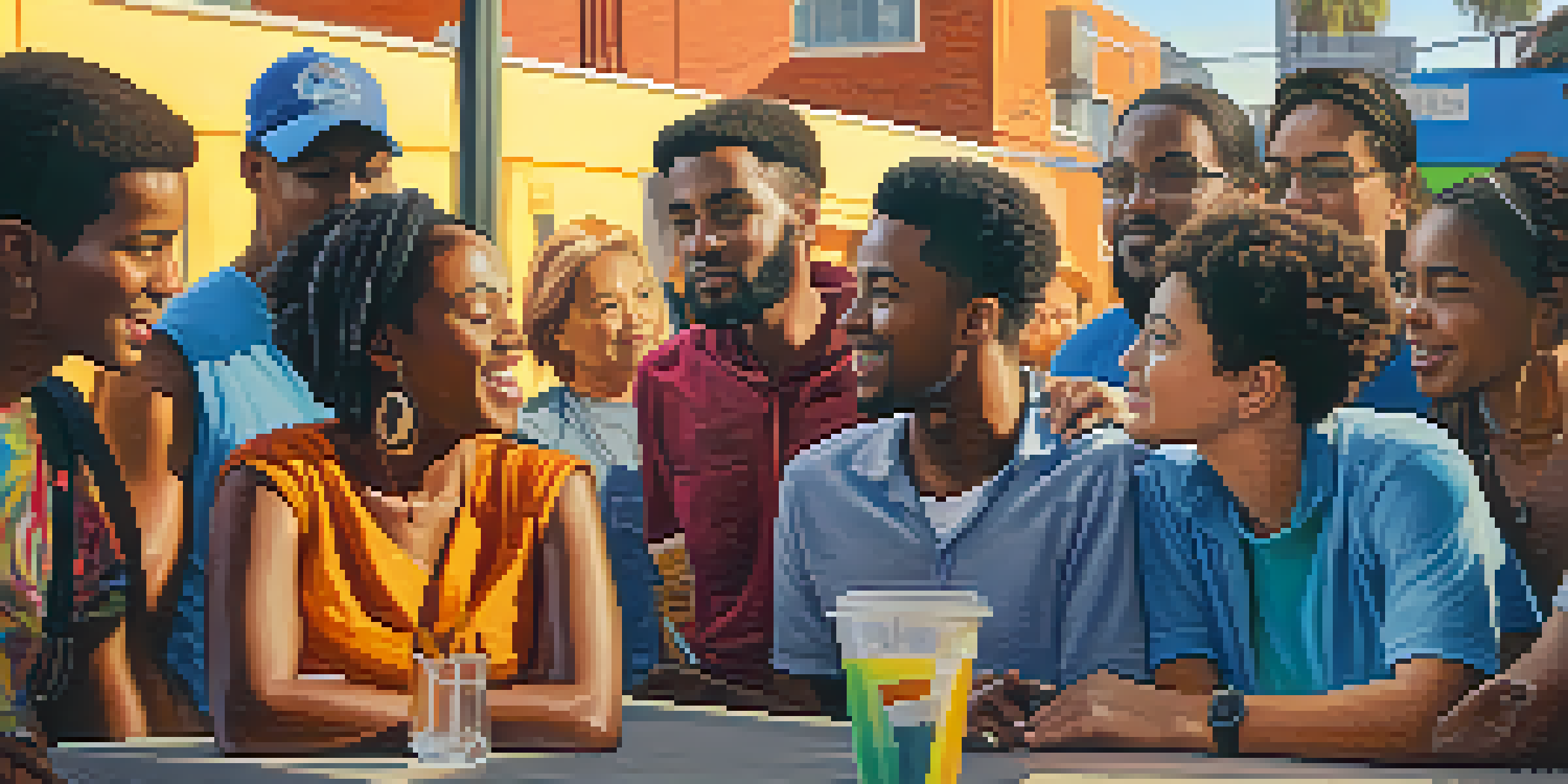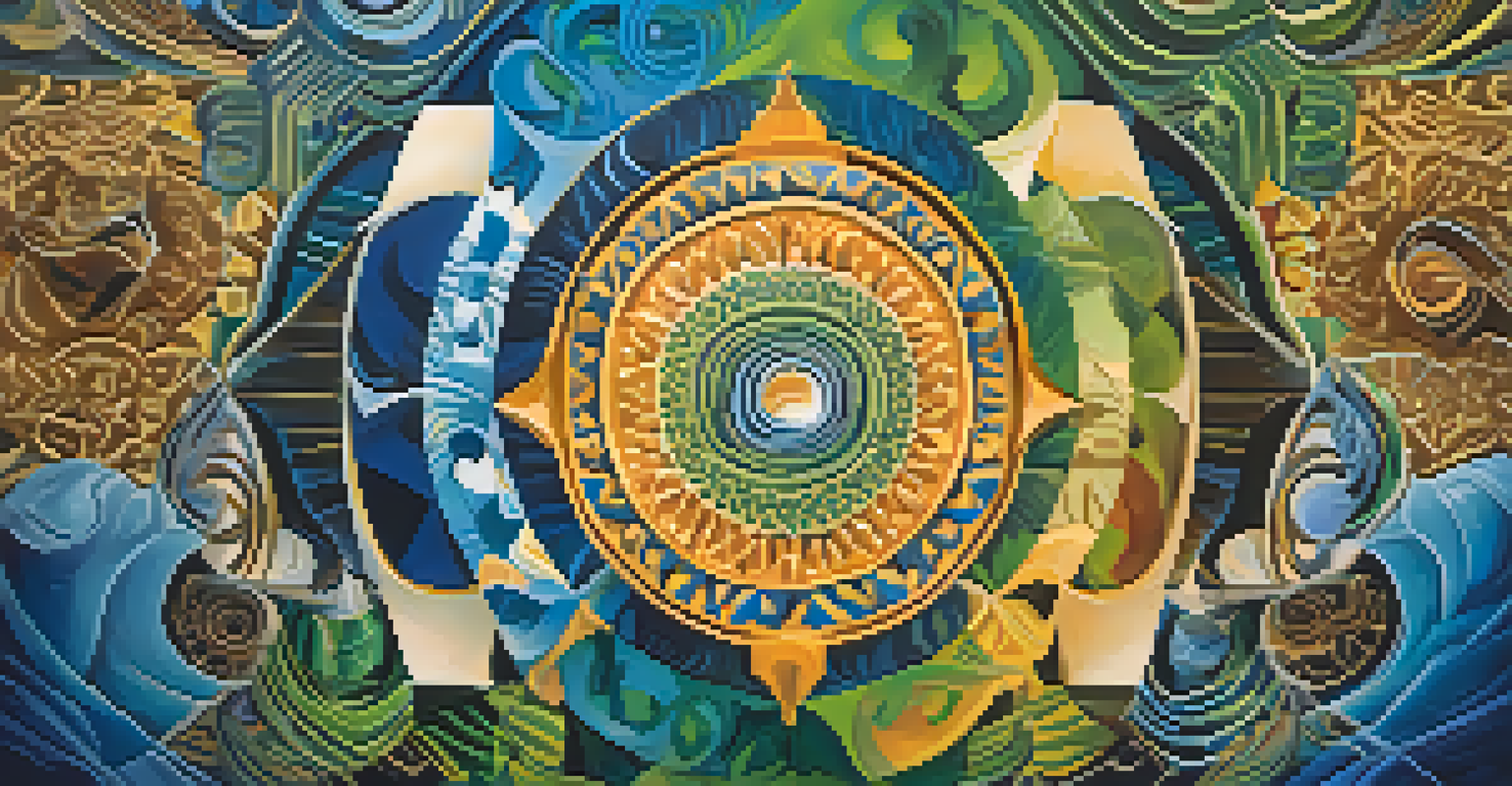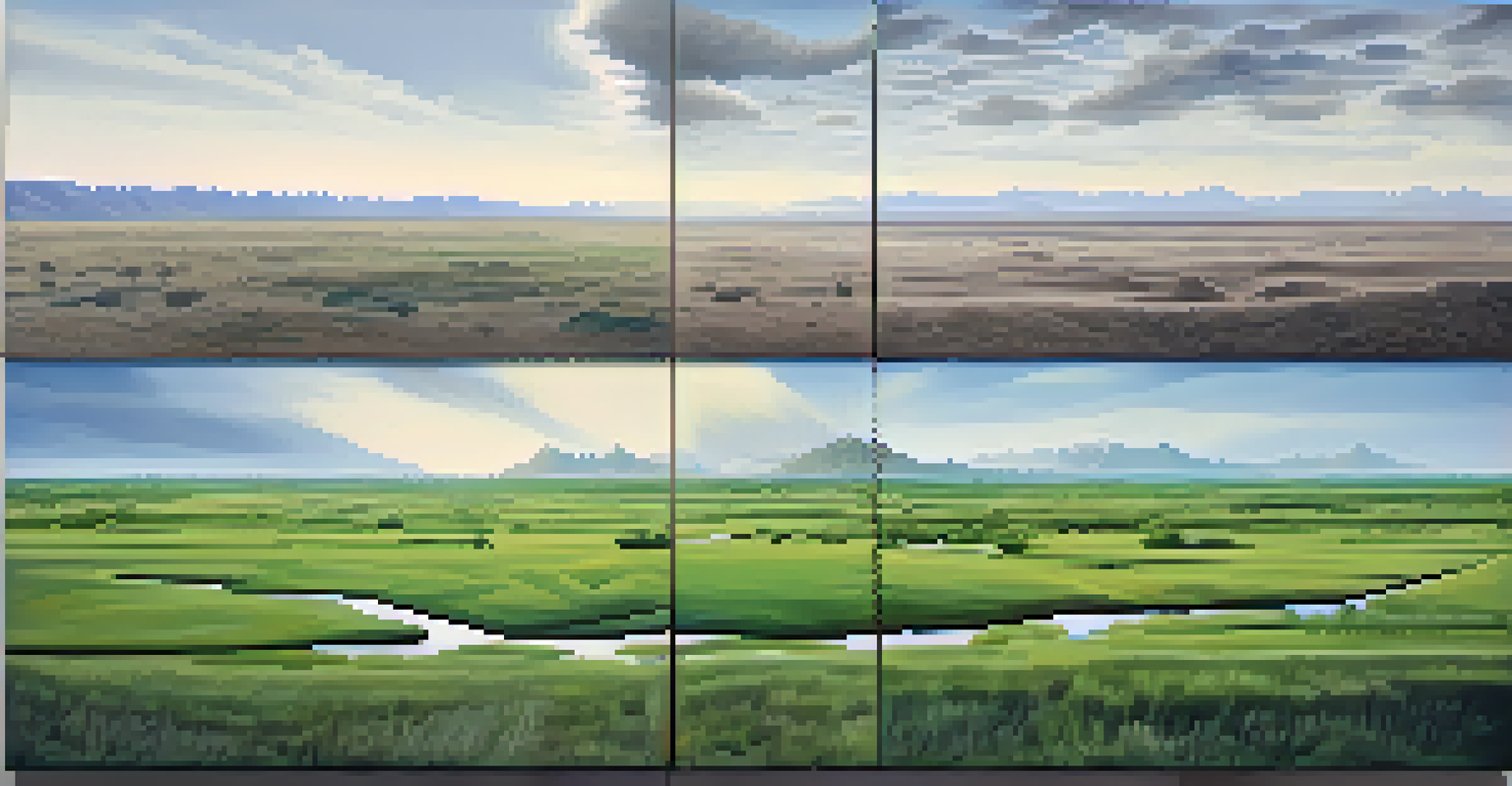Art as a Reflection of Societal Changes and Representations

Understanding Art as a Societal Mirror
Art has always served as a reflection of the society in which it exists. From paintings to performances, artists capture the zeitgeist, expressing the collective emotions, values, and struggles of their time. For instance, during the Great Depression, artists like Dorothea Lange created powerful works that highlighted human suffering, prompting societal awareness and empathy.
Art is the most beautiful of all lies.
This mirroring effect allows us to understand not only the historical context but also the cultural shifts occurring within society. Art can reveal social injustices, challenge norms, and inspire change. By looking at art from various eras, we can trace the evolution of societal beliefs and practices, much like a timeline of human experience.
In essence, art becomes a time capsule, preserving the sentiments and challenges of different generations. It invites viewers to reflect on their own experiences and consider how they relate to the larger narrative of humanity.
Art Movements and Their Societal Context
Every major art movement has emerged in response to the specific societal conditions of its time. For example, the Romantic movement in the late 18th century was a reaction to the Industrial Revolution, emphasizing emotion and nature over reason and industrialization. Artists like Caspar David Friedrich painted landscapes that evoke deep feelings, suggesting a longing for the beauty of nature amidst rapid urbanization.

Similarly, the Dada movement arose during World War I, challenging traditional values and norms as a form of protest against the chaos of war. Dada artists embraced absurdity and spontaneity, reflecting the disillusionment of society. Such movements illustrate how art not only responds to but also critiques societal changes.
Art Reflects Society's Values
Art serves as a mirror to society, capturing and expressing the emotions, struggles, and cultural shifts of different eras.
These artistic expressions provide insight into the prevailing attitudes and concerns of the time. By studying these movements, we can gain a deeper understanding of how art and society influence one another.
The Role of Political Art in Society
Political art plays a vital role in shaping public opinion and raising awareness about social issues. Artists use their platforms to comment on political events, injustices, and human rights violations. A notable example is the work of Banksy, whose street art often critiques capitalism and war, sparking conversations around these pressing issues.
Every artist dips his brush in his own soul, and paints his own nature into his pictures.
This form of art acts as a catalyst for change, encouraging viewers to engage with societal problems actively. By provoking thought and discussion, political art can mobilize communities and inspire action. It serves as a reminder that art is not just for aesthetic pleasure; it can be a powerful tool for advocacy.
Moreover, political art can transcend cultural and linguistic barriers, making it accessible to diverse audiences. This universality allows important messages to reach those who might not engage with traditional forms of activism.
Art as a Response to Social Movements
Throughout history, art has responded to social movements, amplifying their messages and rallying support. For instance, during the Civil Rights Movement in the United States, artists like Jacob Lawrence used vibrant colors and dynamic forms to depict the struggles and triumphs of African Americans. His work not only documented the movement but also inspired a sense of identity and pride.
Similarly, feminist art emerged as a response to gender inequality, challenging societal norms and advocating for women's rights. Artists like Judy Chicago created installations that celebrated women's contributions to history and culture, pushing for greater representation in the arts.
Political Art Drives Change
Political art raises awareness and mobilizes communities by commenting on social issues and injustices.
These examples illustrate how art can serve as both a reflection of and a catalyst for social change. When artists respond to movements, they create a visual language that resonates with the public, fostering solidarity and awareness.
Digital Art and Its Societal Impact
In the digital age, art has transformed significantly, reflecting the rapid changes in technology and society. Digital art allows for new forms of expression, enabling artists to explore themes like identity, globalization, and the impact of social media. For instance, many contemporary artists are using digital platforms to engage with audiences in interactive ways, blurring the lines between creator and viewer.
This shift has also democratized art, making it more accessible to a global audience. Social media platforms enable artists to share their work widely, fostering a sense of community and collaboration. It allows for diverse voices to emerge, representing a broader spectrum of societal experiences.
However, the rise of digital art also raises questions about authenticity and ownership in the art world. As we navigate these challenges, digital art continues to reflect and shape societal values, illustrating our evolving relationship with technology.
Art and Cultural Identity
Art plays a crucial role in expressing and preserving cultural identity. Various art forms, from traditional crafts to contemporary installations, reflect the unique experiences and histories of different cultures. For instance, Indigenous art often incorporates traditional symbols and stories, serving as a means of cultural preservation and resistance against colonization.
Through art, communities can celebrate their heritage and share their narratives with the world. This representation fosters understanding and appreciation among different cultures, promoting dialogue and connection. Art becomes a bridge, connecting individuals across cultural divides.
Digital Art Redefines Expression
The rise of digital art democratizes creativity, allowing diverse voices to emerge and engage with contemporary societal themes.
Moreover, as societies become increasingly multicultural, art reflects the blending of identities and experiences. This evolution showcases the dynamic nature of culture and highlights the importance of inclusivity in the arts.
The Future of Art in Reflecting Societal Changes
As we look to the future, the role of art in reflecting societal changes is more important than ever. With global challenges like climate change, social inequality, and political unrest, artists have a responsibility to engage with these issues through their work. Art can inspire hope, provoke thought, and encourage action in the face of adversity.
Emerging technologies, such as virtual reality and artificial intelligence, are also transforming the way we create and experience art. These innovations provide new avenues for artists to explore complex themes and engage audiences in immersive ways. As a result, art will continue to evolve, reflecting the ever-changing landscape of society.

Ultimately, art remains a powerful medium for expressing the human experience. In a rapidly changing world, it serves as a reminder of our shared humanity and the importance of understanding one another's stories.